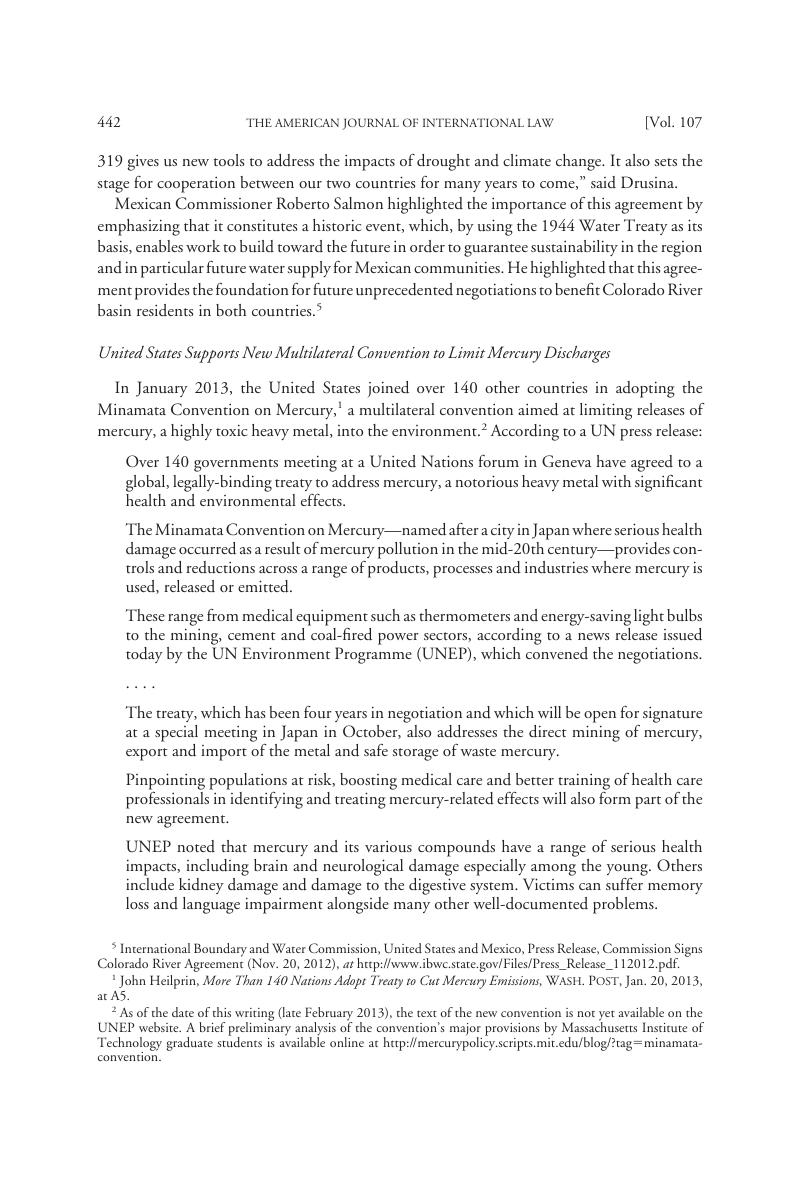No CrossRef data available.
Article contents
United States Supports New Multilateral Convention to Limit Mercury Discharges
Published online by Cambridge University Press: 20 January 2017
Abstract

- Type
- Contemporary Practice of the United States Relating to International Law
- Information
- Copyright
- Copyright © American Society of International Law 2013
References
1 John Heilprin, More Than 140 Nations Adopt Treaty to Cut Mercury Emissions, Wash. Post, Jan. 20, 2013, at A5.
2 As of the date of this writing (late February 2013), the text of the new convention is not yet available on the UNEP website. A brief preliminary analysis of the convention’s major provisions by Massachusetts Institute of Technology graduate students is available online at http://mercurypolicy.scripts.mit.edu/blog/?tag=minamata-convention.
3 [Editor’s note: Prior to the January 2013 negotiations, some leading international health authorities urged that the new convention not ban use of thimerosal, a mercury compound used in many developing countries to prevent contamination in multi-dose vaccine vials. However, some advocacy groups unsuccessfully urged a ban on the substance. Sabrina Tavernise, Vaccine Rule Is Said to Hurt Health Efforts, N.Y. Times, Dec. 17, 2012, at A4.]
4 UN News Centre Press Release, Governments at UN Forum Agree on Legally-Binding Treaty to Curb Mercury Pollution (Jan. 19, 2013), at http://www.un.org/apps/news/story.asp?NewsID=43963&Cr=mercury&Cr1=#.
5 U.S. Dep’t of State Press Release, Remarks at the Opening of the Fifth Session of the United Nations Environment Programme’s Intergovernmental Negotiating Committee to Prepare a Legally Binding Instrument on Mercury (Jan. 13, 2013), at http://www.state.gov/e/oes/rls/remarks/2013/203045.htm.
6 U.S. Dep’t of State Press Release, The United States Applauds the Adoption of the First Global Agreement to Reduce Mercury Pollution (Jan. 31, 2013), at http://www.state.gov/e/oes/rls/pr/2013/203651.htm.


